|
|

|
Alpines Goat
|
|
The French-Alpine is a breed of goat that originated in the Alps. The goats of Alpine type that were brought to the United States from France where they had been selected for much greater uniformity, size, and production than was true of the goats that were taken from Switzerland to France.
|
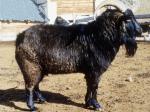
|
Altai Mountain goat
|
|
The Altai Mountain breed of wool goat was formed between 1944 and 1982 on collective farms of the Gorno-Altai Autonomous Region of the former Soviet Union; it is kept on pasture all the year round. The Altai Mountain is the result of Don goats used for improvement of the local goats.
|
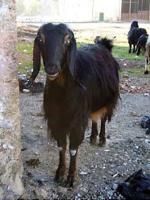
|
Anatolian Black goat
|
|
The Anatolian Black raised in Turkey for its meat, milk and fiber. They are part of the Syrian type and while usually black they are sometimes seen in brown, gray or pied.
|
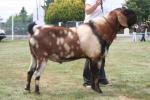
|
Anglo-Nubian
|
|
Anglo-Nubians were developed in England by crossing British goats with bucks of African and Indian origin.
The Anglo Nubian is an all-purpose goat, useful for meat, milk and hide production. It is not a heavy milk producer but has a high average butter fat content (between four and five percent). The Anglo Nubian breeding season is much longer than that of the Swiss breeds so it is possible to produce milk year round.
|
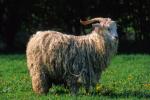
|
Angora Goat
|
|
Origin
The Angora goat originated in the district of Angora in Asia Minor. The Angora dates back prior to early biblical history. Mention is made of the use of mohair at the time of Moses, which would fix the record of the Angora some time between 1571 and 1451 B.C., according to the Angora Goat Mohair Industry publication from USDA (Miscellaneous Bulletin 50, 1929). Mohair became a valuable product in commerce early in the nineteenth century. In order to increase the supply of mohair available for export to the European countries, the Turks crossed the Angora goat with common stock to increase the poundage of salable hair. Probably there was no effort to keep the original Angora separate, and the general increase in size and vigor of the goats in the Angora area was, no doubt, partially the result of this infusion of other blood.
|
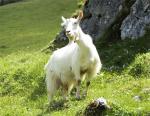
|
Appenzell goat
|
|
Appearance: The Appenzell Goat is a pure white goat with mid-length hair. It has a powerful, harmoniously built body. The limbs are powerful and well positioned. The body is somewhat broader than that of the Saanen and therefore somewhat smaller. This goat is bred hornless. The height of the whithers is said to be 75 to 85 cm with bucks, and 70 to 80 cm with the nannies. The male animals are on average 65 kg in weight, and the female approx. 45 kg.
|

|
Arapawa Island goat
|
|
The Arapawa goats are among the few survivors of the Old English milch (milk) goat which is now extinct to their native England. They may have been introduced as early as the late 1830s by the first European settlers, who established a shore whaling station on the island.
|
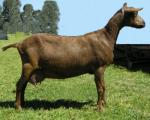
|
Australian Goat
|
|
The feral or wild goat has been present in Australia in quite large numbers since the turn of the century.
|
|
|